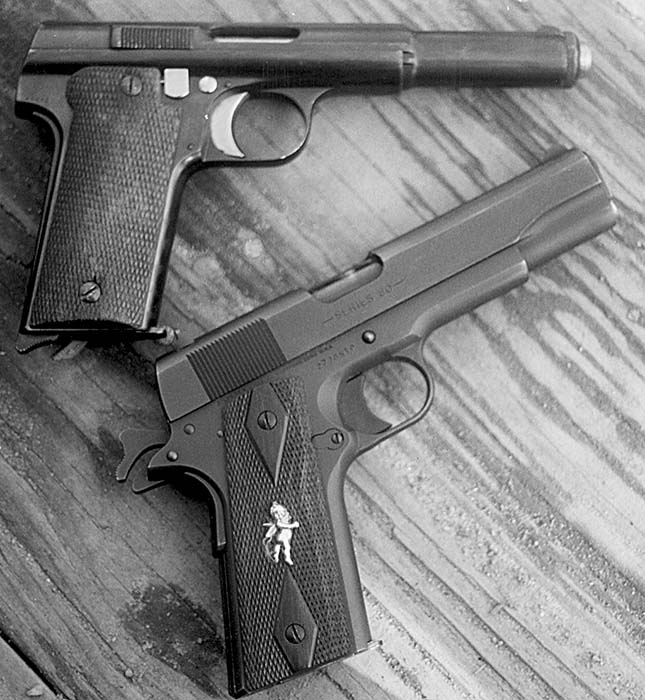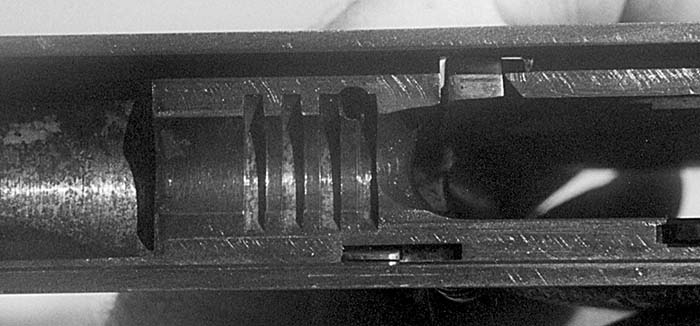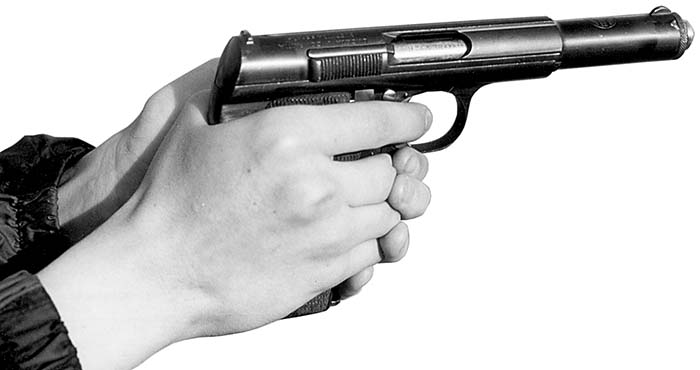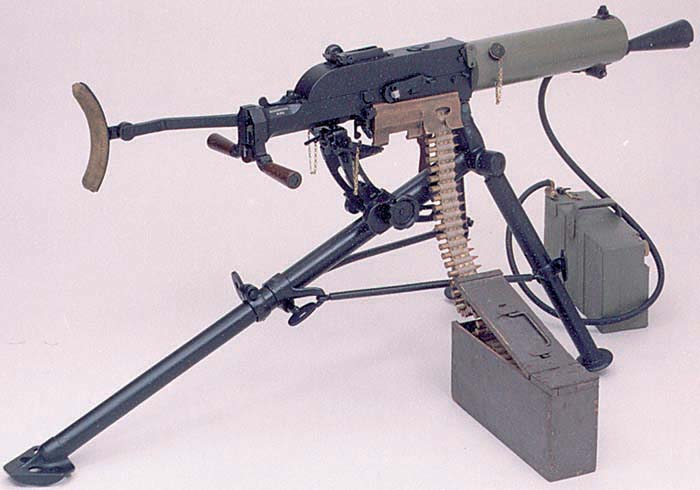By R.K. Campbell
The subject of this report is remarkably unique, extremely accurate, surprisingly reliable, and butt ugly. It isn’t worth much in the way of money but I’d rather have it than many more expensive handguns. It is a better fighting and shooting gun than most of its contemporaries. The Astra 400 is a fascinating firearm but you have to be interested first, to find the gun. This interest won’t cost much as the gun is readily available at bargain prices on the surplus market. Despite the low price the Astra is a high quality handgun.
It is very well made and fitted. The barrel to slide fit seem almost seamless. Each piece is well polished and tool marks are absent. This is as well turned out a handgun as I have examined. Doubtless it could not be produced on the modern market for less than one thousand dollars a copy. Doubt this assessment? The Heckler and Koch P7M8 is one of the few modern guns that owes much in the way of design features to the 400, and it is not an inexpensive handgun. In the day of the Astra 400, skilled labor was cheap.
An interested student of the handgun will be able to predict a handgun’s performance by it’s mechanical aspects and handling – by assessment of the gun’s ‘feel’.
The Astra will fool you. It shoots better than it feels. Before moving to the shooting test and discussing the gun’s performance, let’s take a look at the Astra’s development and the times which formed it. The Astra is not so hoary a design as the Mauser C96 or Luger P 08. It was not manufactured until just after World War One. It falls squarely between the Colt 1911 and Browning Hi Power in development timetables.
At the turn of the century, it was obvious to most that the revolver was finished as a military sidearm. All of the major nations, except Britain, were testing or adopting self-loading pistols. The last hurrah had not yet come and had not come as late as Vietnam, but the revolver was relegated to secondary status by World War One. Many interesting handguns were developed. Some nations adopted light, ineffective handguns which were just a badge of office, although they were capable of enforcing orders. Other nations adopted the doctrine of arming officers and NCO’s with handguns, as they were busy directing troops and could not be encumbered by a long gun. Those nations adopting this doctrine tended to favor larger, more effective handguns. The various 8mm and 9mm pistols of the time are often criticized for power in comparison to our own .45 acp, but most offered good penetration of web gear and light cover. A firearms designer of the time served on the Spanish commission that chose the Bergmann 1910 Model for Spanish Military use. Don Venacio Lopez de Ceballos y Aquirre, Count of Campo Giro, designed the successful Campo Giro 9mm pistol. This pistol was the direct ancestor of the Astra 400. It was chambered for the powerful 9mm Bergmann Mayard or Largo cartridge. Introduced for the 1910 Bergmann pistol, the Largo is stronger than the 9mm Luger and completely outclasses the .38 acp, 9mm Glisenti and like cartridges. Sometimes confused with the shorter 9mm Steyr round, the Largo is a good cartridge.

The Campo Giro was fairly popular but the Count redesigned the gun considerably before his untimely death in 1915. Surprisingly, he redesigned the new pistol as a blowback. Usually, pistols of this power are locked breech design. Like the Campo Giro, the Astra Modelo 1921 was manufactured by Esperanza y Unceta. (Astra) The selection process and fine-tuning of the design lasted for years after the Count’s death, but the Astra 400 was in full production by 1921. The 400 borrowed various design features from the Browning 1910 and Colt 1903 pocket pistols. Still, it owes less to these Browning designs than, say, a Tokarev does. Since the 400 is a blowback design, an extraordinarily strong recoil spring is used. ( Heckler and Koch solved the same problem with a gas fed recoil retarding cylinder in the P7M8). This heavy spring resembles that of a machine-gun! Due to the stiffness of the spring, racking the slide can be challenging. A slip of the hand during disassembly and the barrel bushing lock and recoil spring can reach escape velocity! Reassembly requires strength and patience. All parts are precision fitted and polished. The 400 is a hammerless design. The geometrically designed spurless hammer uses a very strong hammer spring to help combat slide velocity. The firing pin spring is similarly robust. The barrel locks up in a very unusual manner. The locking lugs are located on the bottom of the barrel, locking into the frame. There are no discernible tool marks, and lock up is solid with little to no lateral motion. It is impressive in overall quality of manufacture and fit.
The Astra 400 found wide acceptance, being purchased in great number by the Spanish Army. When we consider what was available at the time, the Astra 400 was a very attractive pistol. I would far rather have it for serious use than the Luger or a revolver. Eventually, more than 105,000 were produced, seeing use by both sides in the Spanish Civil War and by the German Army. Post war German border guards used this handgun. A slightly shorter and lighter version, the 600, was chambered for the 9mm Luger cartridge.
My pistol was imported by Century International. It is in excellent condition. The blue is good, and the barrel is in fine condition. A nick at the muzzle shows that someone had difficulty in fieldstripping this gun. The safety and hammer are attractively nickeled. The 400 is not a hammerless striker-fired gun but a concealed hammer pistol. The barrel is marked 9mm/.38, denoting it can be used with the 9mm Largo round or the similar .38 acp. The .38 acp has a semi rim which prevents it from functioning in some 9mm Largo pistols, but the 400 usually runs well with the .38 acp. Much has been written concerning the 9mm Largo’s ‘accommodating chamber.’ These guns are said to feed, chamber, fire and eject the 9mm Luger, 9mm Steyr, 9mm Largo, .38 acp and .38 acp Super. Some do, some don’t, but the Astra 400 seems to be the best of the breed. I wouldn’t use the short 9mm as it can fall into the chamber and still be fired by a too long firing pin – a disaster. Many 9mm Largo pistols require the breechface be opened to .405 inch and polished to be reliable with .38 acp ammunition. My gun worked perfectly as is. Some will ask if the .38 Super is suitable for firing in this handgun. Frankly, most modern .38 Super ammunition is loaded little hotter than the 9mm Luger. I would NOT fire Cor Bon Supers in this old gun at all, but I wouldn’t hesitate to fire Winchester, Remington or Black Hills loads. But, I don’t use the 400 for serious purposes. It is a fun gun. I certainly would not feel naked before my enemies with an Astra 400 and a magazine of hollowpoint .38 Supers, however.

Fortunately, there is now plenty of 9mm Largo ammunition available and we don’t have to convert our guns to .38 acp or use .38 acp brass in loading our own. CCI’s. Affordable aluminum cased Largo loads are affordable, reliable, and accurate – all we could ask. Surplus Spanish manufactured Largo ammunition has recently entered the United States as well.
I conducted firing tests with not only the Blazer loads but many personal handloads with a variety of bullets. The U shaped Aster feed ramp proved to feed any bullet style. All rounds fed, chambered, fired and ejected normally.
This is a comfortable gun to fire. The grip angle is similar to the modern P7M8.
The grip takes some getting used to but does not stretch average sized hands. The grip is far more comfortable than a double column magazine pistol, and trigger reach is quite right for most digits. The safety was both positive and rapid to manipulate, one of the few efficient non Browning types. The gun has a magazine safety and will not fire without a magazine. The slide locks open on the last shot but the slide does not fall when the magazine is taken out, despite the absence of a slide lock. I found myself firing to slide lock to avoid racking the heavily sprung slide. The sights are typical embryonic military type, not a bit too large but precise when lined up.
I was pleased with the Astra 400’s trigger action and sights. First of all, the gun’s trigger compression was an even, smooth six pounds. The sights proved perfectly regulated to 25 yards with 124 grain ammunition. The gun’s blowback action would seem to invite greater recoil, but this was mitigated to a degree by the 400’s strong recoil spring and well designed grip. The gun was pleasant to fire. Muzzle flip was a little out of line for the gun’s power, but not unmanageable. No thirty-four ounce 9mm kicks very much. The Astra’s long barrel maximized handloads. A 115-grain JHP at 1350 fps was no problem.
I experienced no undue pressure signs or unpleasant recoil during the test.
A hasty rest at 15 yards showed a nice 1.2 inch group, an impressive showing. At 25 yards a 115 grain Gold Dot bullet over Unique powder was the ticket for a 2.0 inch group. This gun will shoot! Later, on the farm, I had a chance to do a bit of long range shooting. The flat shooting Largo is a real danger to varmints, pests and feral dogs to at least 50 yards.
Slowfire accuracy is good, but handguns are for fighting. Handgun fights aren’t duels, they are brawls. Pushing the Spanish pistol in combat drills was enlightening. Drawing and firing at seven yards showed excellent speed. The safety is not so sure as a 1911 to disengage in an emergency, but far faster and handier than the various slide mounted safeties fitted to modern ironmongery. Setting the front sights on the target with Ayoob’s STRESSFIRE sighting technique, we put several magazines into the X ring. The 400 is at least as fast to an accurate first shot as any modern double action gun and faster than most. Accuracy to the first shot is more important than magazine capacity!
During the drills, I resorted to a Don Hume belt slide, which although made for the 1911, worked with my Astra. Not a perfect fit but usable. I found myself liking this gun more than I thought I would. It is definitely old world quality, yet it cost one tenth the price of a SIG P210. But, the 400 is more powerful and has less sharp edges!
I won’t be giving up my SIGs and Colts for the Astra 400. But it is an even bet a diehard Spanish pistoleo or two still relies upon one of these guns for daily protection. They could do worse!
| This article first appeared in Small Arms Review V3N11 (August 2000) |












